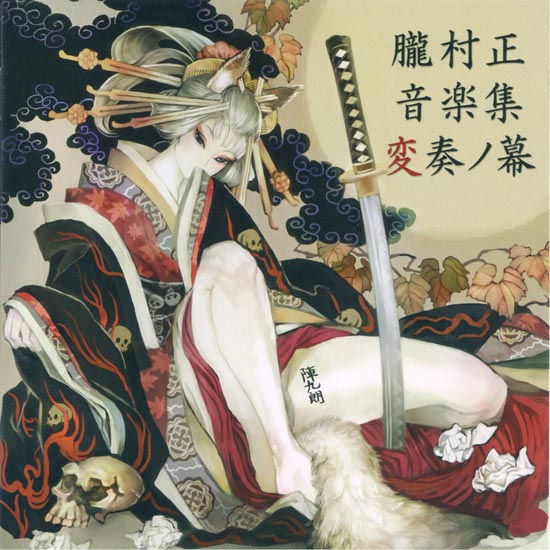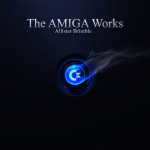Back when the Muramasa soundtrack was released in 2009, we were impressed by the traditional Japanese score and the attention to detail that went into the compositions. The quality level was already fairly high, and when the game went on to sell rather poorly, Muramasa was seemingly the last game I thought would receive an arrange album. But here it is.
Basiscape’s Yoshimi Kudo, Mitsuhiro Kaneda, Kimihiro Abe, Azusa Chiba, and Noriyuki Kamikura team up to provide a number of arrangements from the game as well as some new compositions based on unused boss artwork by George Kamitani. Finally, a recording of the Press Start 2010 medley is also featured.
Is the music from Muramasa worth revisiting with this arrange album? Find out in our review.
So, with the quality bar already set so high and the traditional Japanese nature of the score, where could the Basiscape team really take it? As it turns out, many of the arrangements here are similar in style to their original counterparts, but are improved with live performances (including those on traditional erhu, shamisen, shakuhachi, and taiko) and some impressive elaborations, taking formerly minute-long pieces and turning them into five-minute long masterpieces. You’ll likely recognize bits and pieces from the original score if you really loved it, but for the most part, this album stands on its own.
Take the opening track, “Introduction,” for example. Sakimoto’s original was a little over a minute and a half, whereas Yoshimi Kudo’s arrangement is close to four and a half minutes in length, taking the memorable melody and turning it into an emotional rollercoaster, starting with a distant and mythical take on the theme before exploding with energetic percussion to highlight the action that was the emphasis of the game.
And there is a lot of action here. I’ll get to the new boss themes later, but “Magnificent Palace” will get your blood pumping with some Dynasty Warriors-style electric guitar shredding paired with shamisen, slap bass, and rock percussion. It’s really a blast. The electronic-tinged “Deep in the Mountain and Valley” on the other hand brings together jazzy piano, synth arpeggios, an octave-jumping bass line, and impressive ehru work, creating a perfect hybrid.
Other tracks are much gentler in nature. In fact, during my first listen through of the album, I actually dozed off on the couch, finding comfort in the beautiful shakuhachi melody of “Losing Consciousness” with its encompassing string backing and the meandering “Dim Twilight” with its soulful ehru performance. The opening vocal work in “Seasonal Beauties” is quite lovely although it doesn’t last, giving way to a funky yet relaxing jazz piece with piano, upright bass, and a beautiful ehru and woodwind melody. Towards the end, “Mutual Love” moves decisively forward with its strong melody contrasting with its soft instrumentation.
One track that really stands out, however, is “Frugal Eating,” which is in a class of its own. The original track was short and playful, and that same whimsical vibe is presented here. A simple and mischievous flute melody is backed by traditional percussion as the piece builds upwards. It’s a lot of fun, and is my favorite track on the album.
Now, about those new pieces inspired by Kamitani’s unused boss illustrations. “Scattering Petals” is probably my favorite of the bunch with its rock style and its mean use of the shamisen and jazz piano, although “Mist-Like Vanishing” is equally fantastic with its Spanish flamenco guitar and percussive elements. The latter hardly comes off as a battle theme at all. “Outrageous Treason” is powerful and disciplined, progressing slowly with lots of bass and a foreboding melody. “All At Stake” sounds like a Sakimoto composition with its use of the main theme and a march-like progression although it’s the work of Kamikura. It ventures into a variety of territories, including a strange orchestral polka at one point, but it’s interesting throughout.
The final track on the album is the Press Start 2010 medley covering “Introduction” and “Impermanence,” combining live orchestral with electric guitar. I can’t say that this track keeps my attention, as there are frequent shifts in tempo and mood, but it’s still a cool addition to an already great album.
I think I’ve summed up everything I have to say about this album in the first post-jump paragraph. I think this album is a hugely unexpected surprise, and while the arrangements are generally true at least in style to their originals, they are greatly expanded upon and fleshed out. The packaging is also great, featuring artwork by George Kamitani as well as illustrations of and commentary on the unused bosses.
The album’s available on CD Japan if you want to import the physical album (recommended for the artwork), and also on the international iTunes store for $9.99.
What do you think of this album concept? Are there other games that you’d like to see Basiscape revisit, like Opoona, perhaps?
Tags: Arrangements, Basiscape, Basiscape Records, iTunes, Japanese, Muramasa, Music Reviews, Orchestral, Press Start, Press Start 2010, Reviews








































